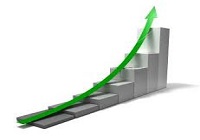Developed after the Keynesian model of economic growth, Harrod-Domar model aims to tell us the economies rate of growth by telling us in terms of savings and increase in capital. The true essence of this model is based on the assumption that there is actually no valid reason that can be explained naturally for an economy to develop in a balanced fashion. The founders of this theory were Roy F. Harrod and Evsey Domar . The followers of the Classical Economy school of thought, argued for the failure of the Harrod-Domar model because according to them the solution obtained from Harrod-Domar model was unstable and didn’t fixed the solutions. The dialogue between the Harrod-Domar and the Classicalists led to the creation of Solow-Swan model.
In the Harrod-Domar model, employment and income’s analysis were done for long duration of time and thus they considered the investment’s income and capacity. Their model showed that for a capitalist economy to attain a uniform growth the investment rate should be increased at a certain rate. In the Harrod-Domar model accumulation of capital plays a key role to determine the economic growth. The biggest difference between the Keynesian economists theories and Harrod-Domar Model was that the latter considered both sides such as long and short term while the Keynesian only used one side that was the short-term side of the economy. According to Harrod-Domar model, if one has to maintain full employability, the total expenditure by investing must suffice the added output that was developed by the investment. There should be a definite growth in the real national income to make sure that full employability is present which would then lead to steady growth rate. They also said that if we kept omn increasing the annual investment and there was no demand in the market then it would lead to underutilization of capital stock and such a situation is detrimental to growth.
The Solow–Swan model being an exogenous growth model is an extension to the Harrod–Domar model. The basic essence of this model provides an explanation of long term economic growth using the fundamentals of neoclassical theories like labor and productivity. The model was developed by Robert Solow and Trevor Swan in the year 1956 and acted as the extended version of the previous Harrod–Domar model. Now Solow extended the previous model by adding few other variables in the picture of Harrod-Domar model. The added variable includes labor which acted as the production factor and the rigidity of capital-labor ratios was also removed. The Solow-Swan Model had a short term implication that in short terms growth could be found by referring the steady state that was now created by capital investment change, growth of labor force and the rate of depreciation, the rate of savings affected the capital investment. In Long term implications, Solow model theorized that technological process can only bring growth. The Solow-Romer model is used to find growth in long term condition.
The various predictions of Solow-Swan model includes that the rate of savings and technological progress does not have any influence over the outputs growth rate. The increase in rate of savings is capital inductive as it increases the capital accosted per labor. The biggest implication suggested by the Solow-Swan model is the conditional convergence. Under the theory of conditional convergence if countries have the same variables like rate of savings, technology and growth rate of population which affect growth will ultimately converge to a particular state and it would be equal for all the countries. The other implication of this theory would be that if a poor nation has the same variables like a rich nation then both of them will have same constant growth rate in long duration. One can argue that the conditional convergence could not be possible but the validity of this theory was justified when the conditional convergence was observed in the northern states of the United States of America in the section of education policies, arrangements of institutions and trade policies with various other countries. Thus we can say that the Solow model is more advanced and realistic than Harrod-Domar model but without the Harrod-Domar maodel development of Solow model might had took a very long time.
Click here for government certification in Accounting, Banking & Finance





5 Comments. Leave new
in touch with all the facts regarding the topic very much though it is well articulated.
Well articulated!
great work!!!
loved it…
Very well explained.